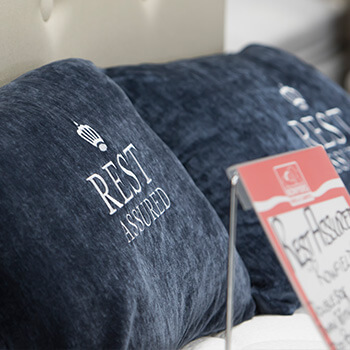
July 2024
Upholstery in mattresses refers to the materials used to cover and pad the mattress, providing comfort and a pleasant sleeping surface. Different types of upholstery materials have various characteristics, advantages, and disadvantages. Here's an overview of some common types:
Characteristics:
Made from viscoelastic polyurethane foam.
Conforms to the body's shape, providing pressure relief.
Advantages:
Pressure Relief: Excellent at relieving pressure points, making it ideal for those with joint or back pain.
Motion Isolation: Minimizes movement transfer, beneficial for couples.
Comfort: Offers a unique, enveloping feel.
Disadvantages:
Heat Retention: Can trap heat, leading to a warmer sleep experience.
Initial Odor: New memory foam mattresses may have a chemical smell, known as off-gassing.
Response Time: Takes a few moments to return to its original shape after weight is removed.
Characteristics:
Made from natural or synthetic latex.
Offers a bouncy and resilient feel.
Advantages:
Durability: Highly durable and long-lasting.
Temperature Regulation: Naturally breathable, keeping sleepers cooler.
Hypoallergenic: Resistant to dust mites and mold, making it ideal for allergy sufferers.
Disadvantages:
Cost: Generally more expensive than other materials.
Weight: Heavier and harder to move or rotate.
Firmness: Can be too firm for some sleepers, especially if it's natural latex.
Polyurethane Foam
Characteristics:
Made from various densities and firmness levels of polyurethane foam.
Often used in the comfort layers of mattresses.
Advantages:
Cost-Effective: Generally more affordable.
Versatility: Available in a range of firmness levels and densities.
Lightweight: Easier to handle and move.
Disadvantages:
Durability: Lower quality foams can degrade faster.
Off-Gassing: Potential for initial chemical odor.
Support: May not offer as much support or longevity as other materials.
Characteristics:
Foam infused with gel particles.
Designed to provide a cooler sleep experience.
Advantages:
Cooling Properties: Helps dissipate heat, providing a cooler sleeping surface.
Pressure Relief: Similar to memory foam, it offers good contouring and pressure relief.
Motion Isolation: Reduces motion transfer.
Disadvantages:
Durability: Gel-infused foam can break down faster than traditional memory foam.
Cost: Typically more expensive than standard foams.
Weight: Can be heavier due to the added gel.
Characteristics:
Natural material used in the upholstery layer.
Known for its softness and breathability.
Advantages:
Temperature Regulation: Excellent at wicking away moisture and maintaining a comfortable temperature.
Natural and Sustainable: Eco-friendly and biodegradable.
Hypoallergenic: Naturally resistant to dust mites and mold.
Disadvantages:
Cost: Can be more expensive due to the quality and sourcing of wool.
Firmness: May not provide as much cushioning as synthetic materials.
Maintenance: Requires care to avoid matting and compression over time.
Characteristics:
Natural, breathable fabric.
Often used in mattress covers and padding.
Advantages:
Breathability: Promotes airflow, keeping the mattress cool.
Natural and Eco-Friendly: Biodegradable and sustainable.
Softness: Provides a comfortable and soft sleeping surface.
Disadvantages:
Durability: Can compress and wear out faster than synthetic materials.
Cost: High-quality cotton can be more expensive.
Moisture Retention: Can absorb moisture, leading to potential mold growth if not properly cared for.
Characteristics:
Synthetic fiber used in mattress covers and padding.
Often blended with other materials.
Advantages:
Affordability: Generally less expensive than natural materials.
Durability: Resilient and long-lasting.
Easy Maintenance: Resistant to wrinkles and easy to clean.
Disadvantages:
Breathability: Less breathable than natural materials, potentially leading to heat retention.
Chemical Use: Production involves chemicals, which may be a concern for some people.
Comfort: May not offer the same level of softness as natural materials.
Characteristics:
Combines multiple materials like memory foam, latex, and coils.
Designed to offer the benefits of each component.
Advantages:
Balanced Comfort and Support: Combines the pressure relief of foam with the support of innersprings.
Temperature Regulation: Often includes cooling materials like gel or breathable foams.
Versatility: Suitable for a wide range of sleepers due to the combination of materials.
Disadvantages:
Cost: Can be more expensive due to the use of multiple materials.
Weight: Often heavier and harder to move.
Complexity: The combination of materials can make it harder to predict how it will feel until tried.
Each type of upholstery material in a mattress has its unique set of advantages and disadvantages. The best choice depends on individual preferences, sleeping habits, budget, and specific needs like temperature regulation or allergy concerns.
 Google 5 Star Rating
Google 5 Star Rating



Bowyer's Beds & Carpets founders, Michael and Brenda Bowyer, have now retired, and the business is now run by their son, Adam, who has inherited their commitment to high quality, exceptional value and unbeatable service levels.